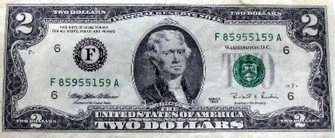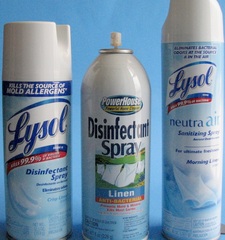
First introduced 150 years ago in 1862, the two dollar has generated many myths, misconceptions, and has both fans and detractors. The obverse (Front) has had presidents, and other historical portraits. The reverse, (Back) has also changed several times. The current iteration has Jefferson on the obverse, and Trumbull's famous painting of the signing of the Declaration of Independence on the reverse. For some facts and fancy about this bill, check out Suite101's site here. And, of course, Wikipedia also has an entry. Now, I really will be excited if I receive a three dollar bill!

 RSS Feed
RSS Feed
